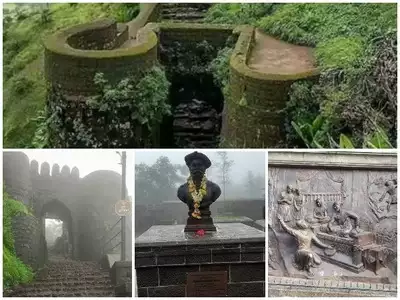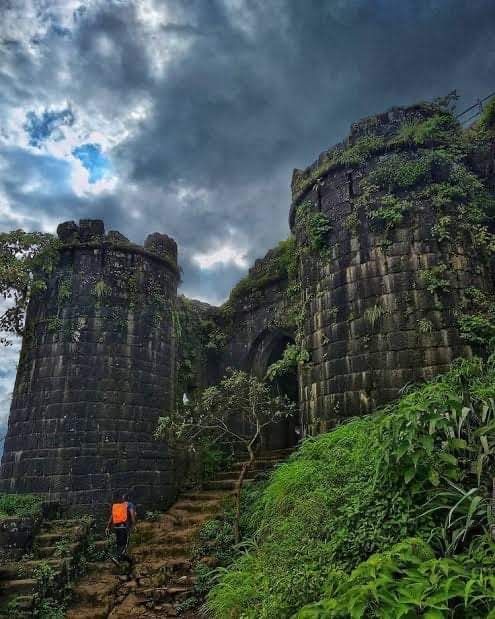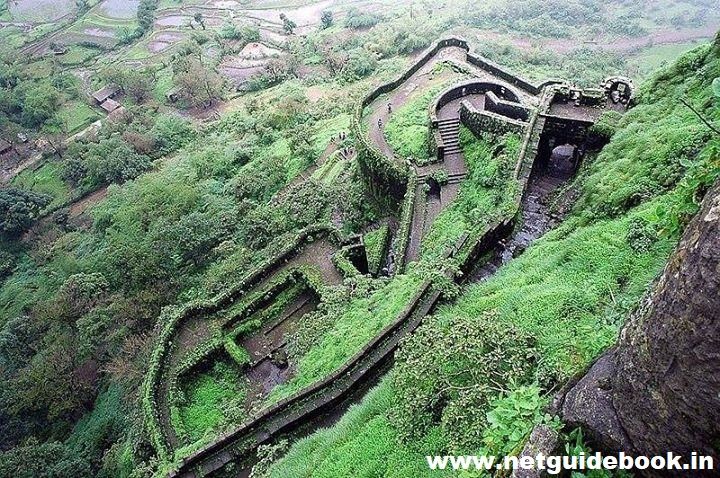SINHAGAD FORT
Sinhagad is an ancient hill fortress located at around 49 km southwest of the city of Pune, India.
Previously known as Kondhana, the fort had been the site of many battles, most notably the Battle of Sinhagad in 1670.

It is located in the Pune district in Maharashtra. The fort is also on the famous fort in Maharashtra which has a great history of Tanaji Malusare. The fort was captured by Tanaji Malusare and his brother. Sinhagad (Lion’s Fort) fort was strategically built to provide natural protection from the enemies due to its very steep slopes. The walls of the forts and bastions were constructed only at key places. There are two gates to enter the fort named Kalyan Darwaja and Pune Darwaza. The Kalyan Darwaja is towards the southeast while the Pune Darwaza is towards north east. The fort is surrounded by several other forts, and was known as the control center of the Maratha Empire. In clear weather, Rajgad, Purandar and Torna forts can be seen from the Sinhagad killa.

Some of the information available about the fort, suggests that it could have been built 2000 years ago. The caves and the carvings in the Kaundinyeshwar temple stand as proofs for the same.. Also there is a Gondwana state symbol on the main gate of the fort. It has the sign of lion and elephant as well as fish. The Raj Gondian According to the Deccan sultanates era muslim historian Ferishta, Sinhagad fort was captured from Koli chieftain Nag Nayak in 1340 by the sultan of Delhi, Muhammad bin Tughluq.
The Sinhagad Fort was initially known as “Kondhana” after the sage Kaundinya. The Kaundinyeshwar temple coupled with the caves and carvings indicates that the fort had probably been built around two thousand years ago. The fort was captured by forces of Muhammad bin Tughluq in 1328 from Koli chieftain Nag Naik after a siege of eight months. It then became part of the Bahmani sultanate followed by the Nizam Shahi of Ahmadnagar in 1485. After the fall of Nizam shahi it came under the control of the Adilshahi in early late 1500s.

Shahaji Bhosale, as the commander of Ibrahim Adil Shah II, was entrusted with the control of the Pune region. His son Chatrapati Shivaji Maharaj, refused to accept the Adilshahi and initiated the task of setting up Swarajya. Chatrapati Shivaji Maharaj gained control of Kondana in 1647 by convincing Siddi Amber, the Adilshahi Sardar who controlled the fort, that he, the son of Shahaji Bhosale, could manage the fort’s defences optimally. Bapuji Mudgal Deshpande played a key role in this activity. Adil Shah jailed Siddi Amber for this treasonous act and schemed to get it back. He imprisoned Shahaji Bhosale for a concocted crime and informed Shivaji. In 1649, Adil Shah traded the fort for Shahaji’s release. Chatrapati Shivaji Maharaj recaptured it in 1656 again with the help of Bapuji Mudgal Deshpande who convinced the Fort commander by giving land in the newly created Khed Shivapur village and peacefully gained control of the fort. This fort saw attacks by Mughals in 1662, 1663, and 1665. In 1664, Shaista Khan, a Mughal general, tried to bribe the people of the fort to hand it over to him but was unsuccessful.Through the Treaty of Purandar in 1665, that Chatrapati Shivaji Maharaj entered into with Mughal general Mirza Raja Jai Singh I the fort passed into the Mughal hands.
Thanks for reading.